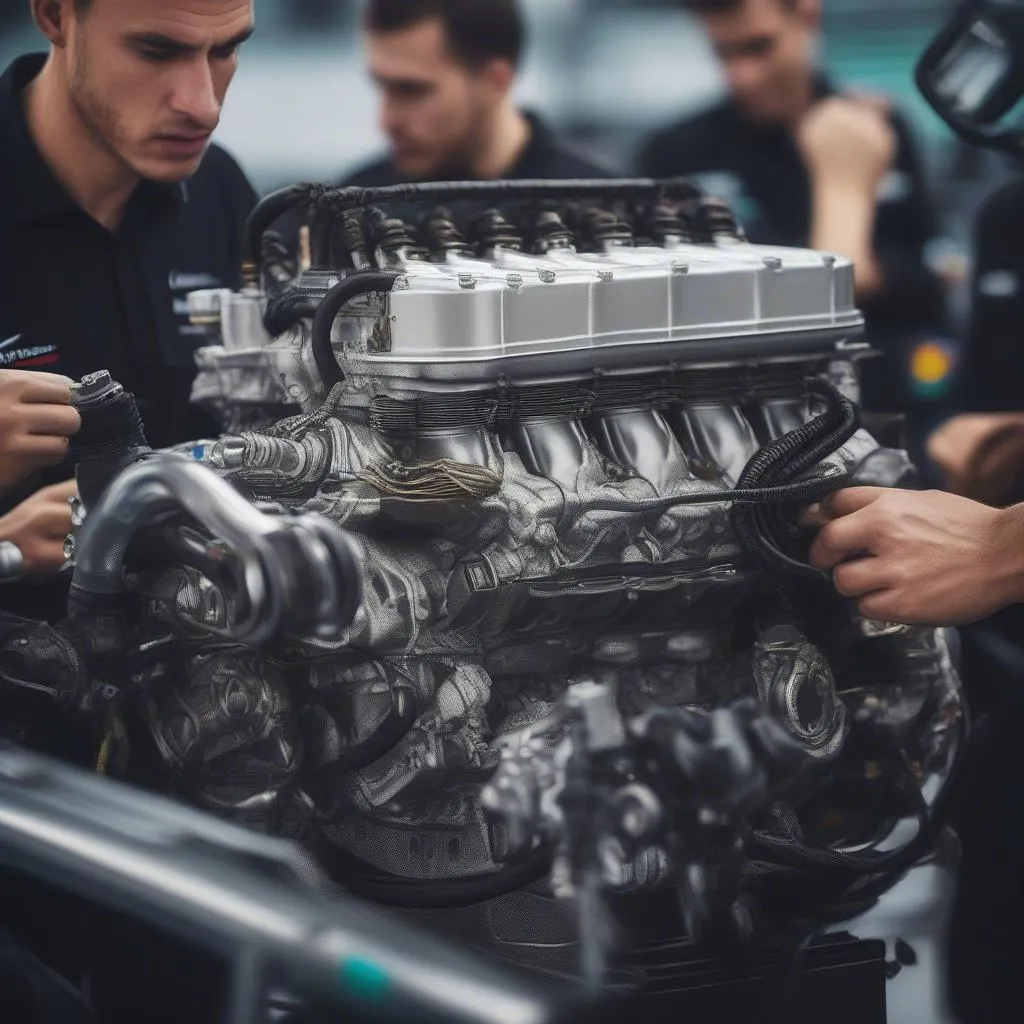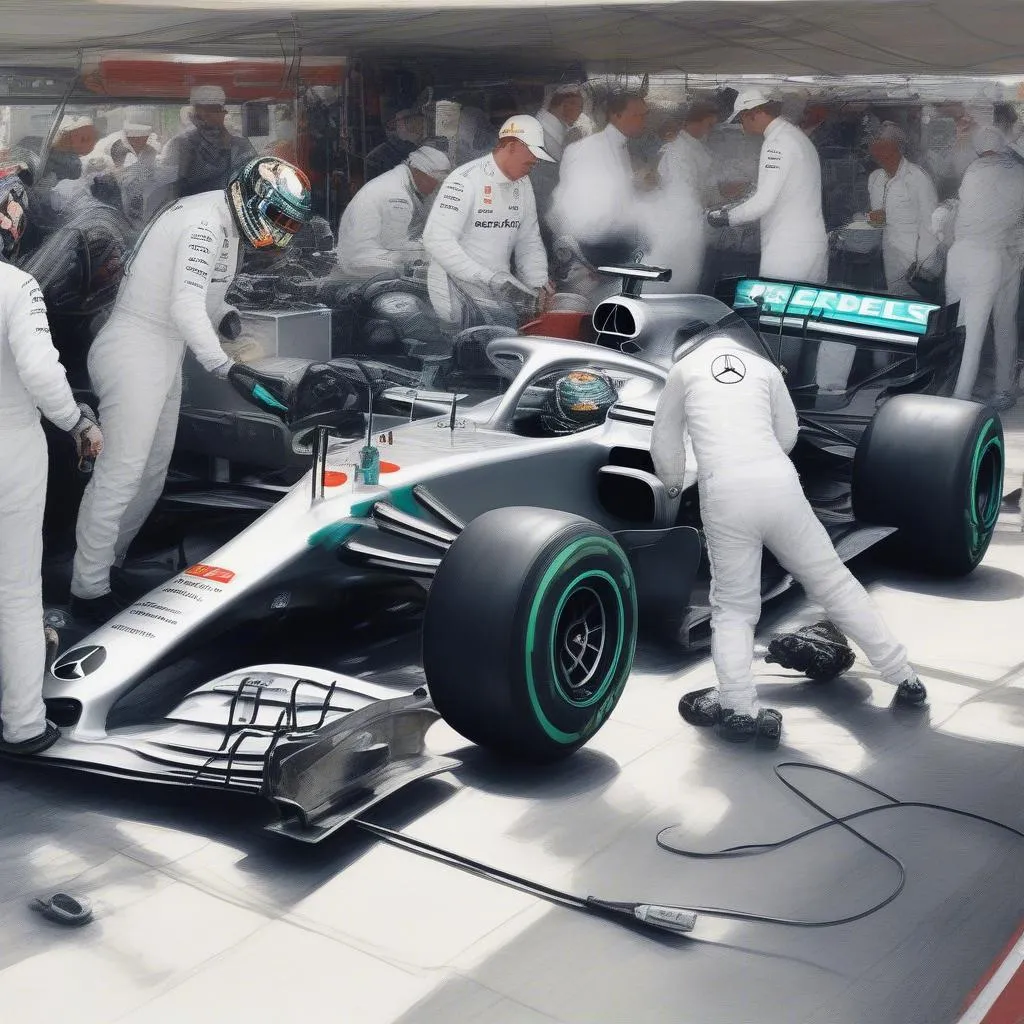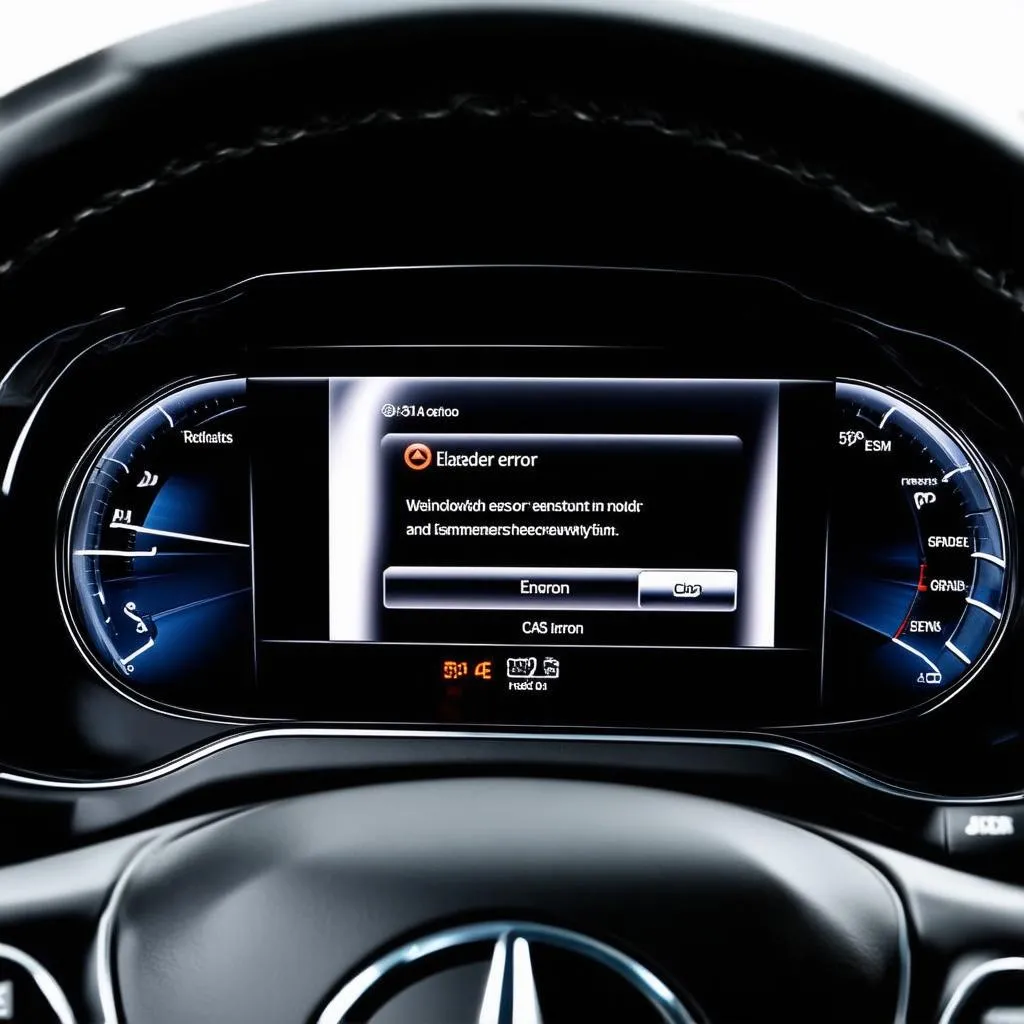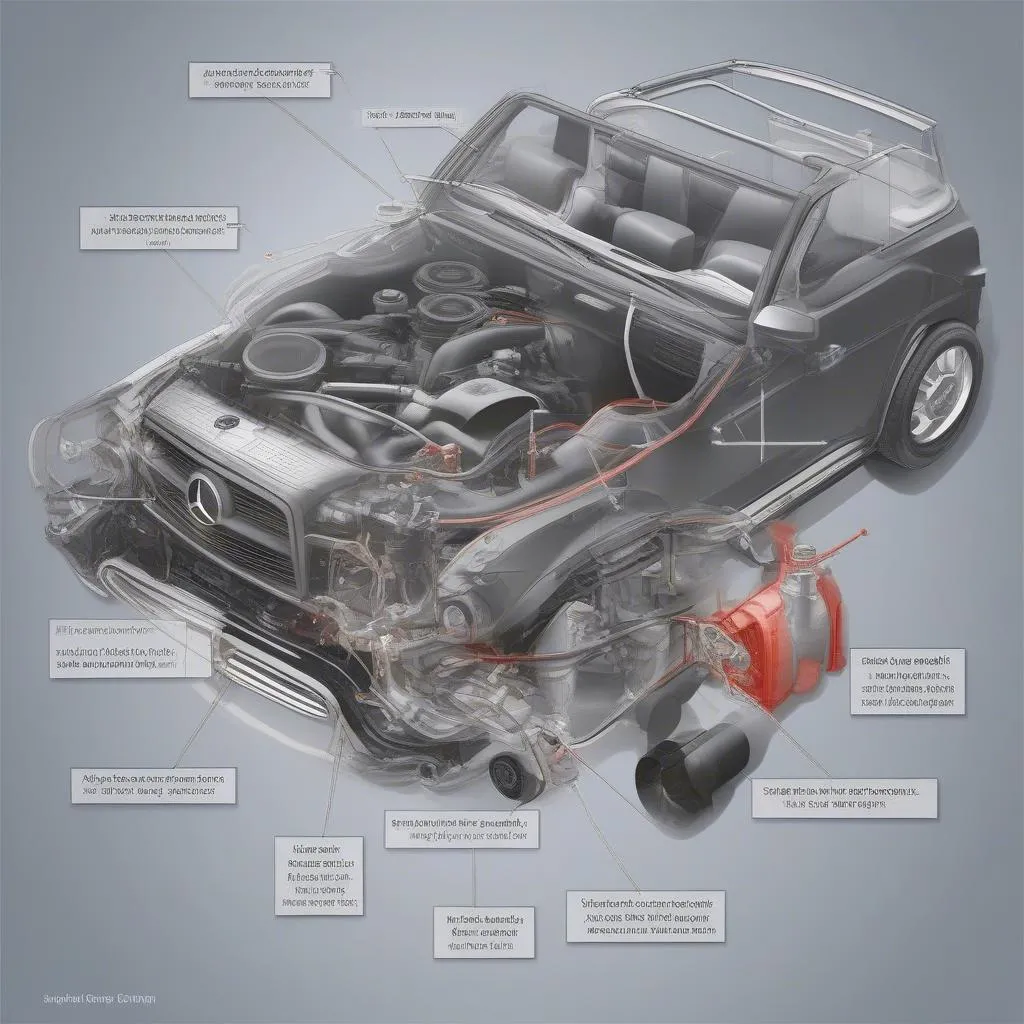The world of Formula 1 is one of precision engineering, lightning-fast pit stops, and of course, incredibly talented drivers. But what happens when a Mercedes F1 car needs fixing mid-race or even between races? How do the best mechanics in motorsport diagnose and address issues with these high-performance machines?
This article delves into the intricate world of Mercedes F1 car fixes, exploring common problems and the meticulous solutions employed by their expert team.
Understanding the Challenges of Fixing an F1 Car
Fixing a Mercedes F1 car is a unique challenge. Unlike a regular car, every component is designed for maximum performance with incredibly tight tolerances. Even the slightest miscalculation can mean the difference between winning and losing. These cars are packed with complex technology, from hybrid power units to intricate aerodynamic components, demanding a deep understanding of engineering principles and specialized tools.
Common Issues and How Mercedes Addresses Them
While the specific problems faced by the Mercedes F1 team can vary greatly, some common issues include:
1. Power Unit Problems:
The hybrid power unit, comprising an internal combustion engine and electric motor, is the heart of an F1 car. Issues like sensor failures, fuel pressure inconsistencies, or even software glitches can significantly hamper performance.
How Mercedes Fixes It: The team relies on real-time telemetry data streamed directly from the car to diagnose power unit problems. They have dedicated engineers analyzing this data to pinpoint the exact source of the issue. Depending on the severity, they might adjust engine mapping remotely or guide the driver through specific procedures. If a component needs replacing, the lightning-fast pit crew can swap out parts in a matter of seconds.
2. Aerodynamic Anomalies:
F1 cars are heavily reliant on aerodynamics for downforce and handling. Even minor damage to wings, diffusers, or the floor can disrupt airflow and compromise performance.
How Mercedes Fixes It: The team uses high-speed cameras and flow visualization techniques to analyze airflow around the car. Damage to the car’s bodywork is often visible, but subtle changes in airflow can be identified through these methods. Depending on the regulations and the extent of the damage, mechanics might use high-strength adhesives and tapes for quick fixes during the race. More extensive repairs happen post-race, often involving meticulous fabrication and replacement of damaged components.
3. Suspension and Tire Issues:
F1 cars experience immense forces during races, putting significant stress on the suspension and tires. A puncture, suspension failure, or even incorrect tire pressure can lead to disastrous consequences.
How Mercedes Fixes It: The team carefully monitors tire wear and pressures throughout the race. Real-time data allows engineers to anticipate potential problems and strategize pit stops for tire changes. In case of a puncture or suspension damage, the driver might be instructed to manage the car until the next pit stop, where the crew can swiftly replace the affected parts.
The Crucial Role of Technology and Expertise
Mercedes’ ability to quickly diagnose and fix their F1 cars hinges on a combination of cutting-edge technology and human expertise. Their sophisticated telemetry systems provide a constant stream of data, allowing engineers to monitor every aspect of the car’s performance. On the other hand, experienced mechanics with specialized tools and a deep understanding of the car’s intricacies are vital for efficient repairs.
 Mercedes F1 Engine
Mercedes F1 Engine
FAQs About Mercedes F1 Car Fixes
Q: How long does it take to fix a Mercedes F1 car?
A: The repair time depends entirely on the complexity of the problem. Minor fixes, like front wing adjustments, can be done in a matter of seconds during a pit stop. However, major issues like engine replacements can take several hours or even days.
Q: Can Mercedes fix all problems during a race?
A: No, not all problems can be fixed during a race. Some issues, like major engine failures or chassis damage, are too complex to address within the limited time frame of a race.
Q: What role does software play in fixing a Mercedes F1 car?
A: Software plays a critical role in both diagnosing and fixing problems. Engineers can analyze real-time data to identify issues, adjust engine parameters remotely, and even guide drivers through specific procedures to manage certain problems.
 Mercedes F1 Pit Stop
Mercedes F1 Pit Stop
Cardiagtech: Your Source for Automotive Diagnostics
For those interested in the world of automotive diagnostics and repair, CARDIAGTECH offers a range of products and resources. While not at the same level of complexity as an F1 car, modern vehicles rely heavily on electronics and software. CARDIAGTECH provides tools and information to help you understand and maintain your own vehicle, from diagnostic scanners to informative articles and guides. Learn more about their offerings on their website: https://cardiagtech.com/.
The Pursuit of Perfection
“In Formula 1, the pursuit of perfection is relentless,” says Dr. Markus Schmidt, a renowned automotive engineer (fictional). “Every thousandth of a second counts, and even the smallest issue can have significant consequences.”
The ability of the Mercedes team to quickly diagnose and fix problems on their F1 cars is a testament to their engineering prowess, technological innovation, and the dedication of their team members. Each race is a high-stakes battle against time, requiring precision, expertise, and a deep understanding of these complex machines.


